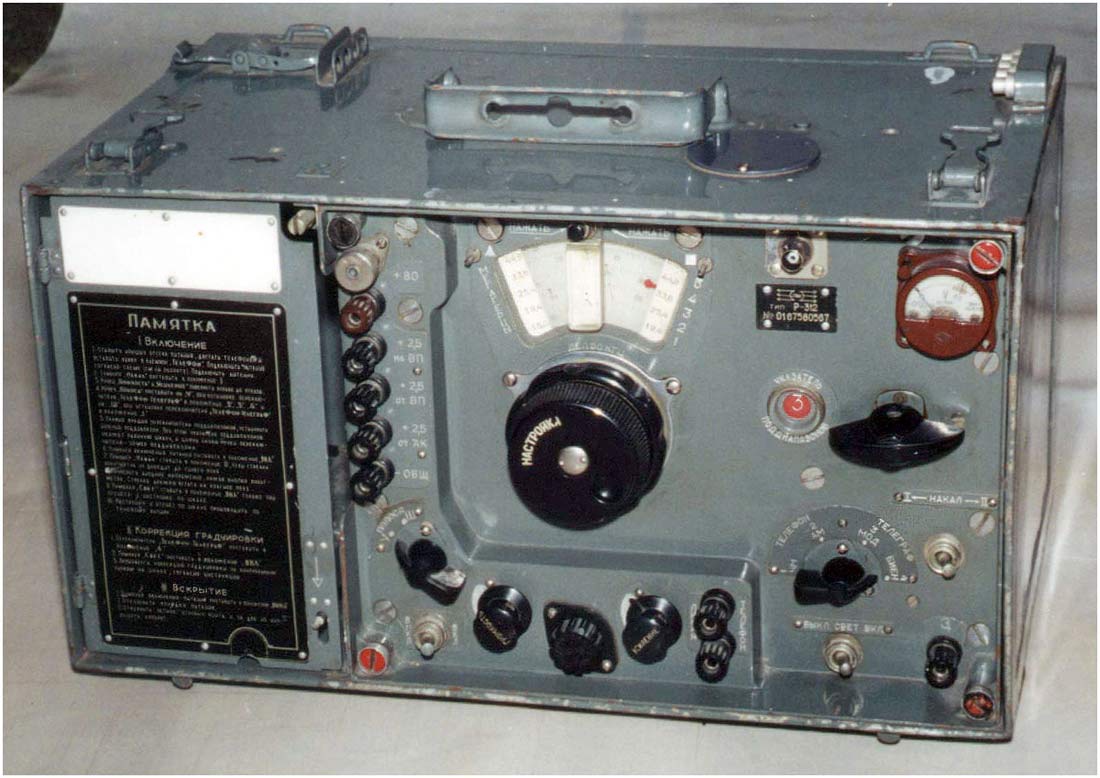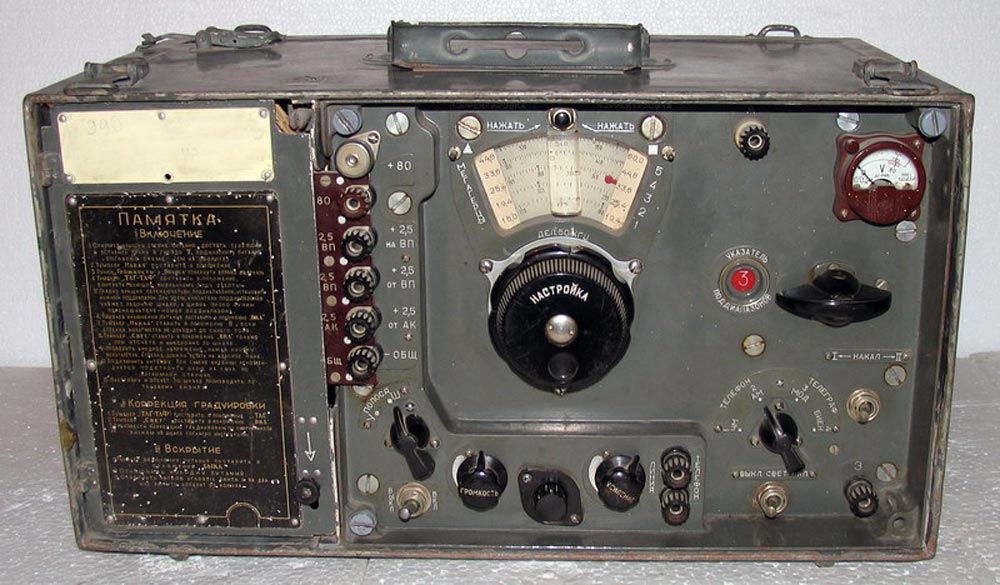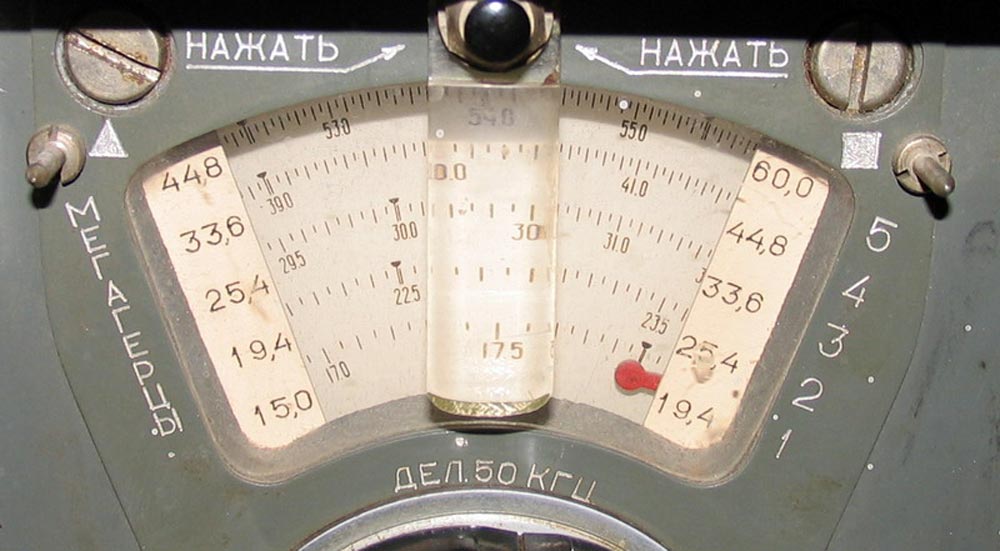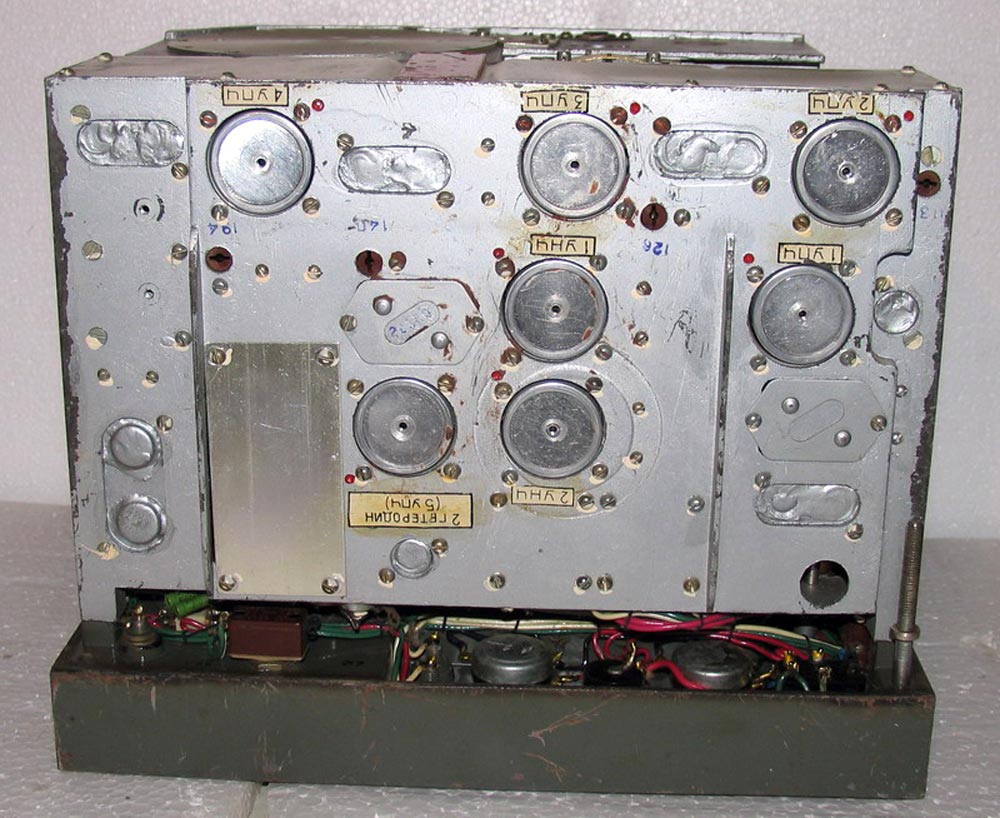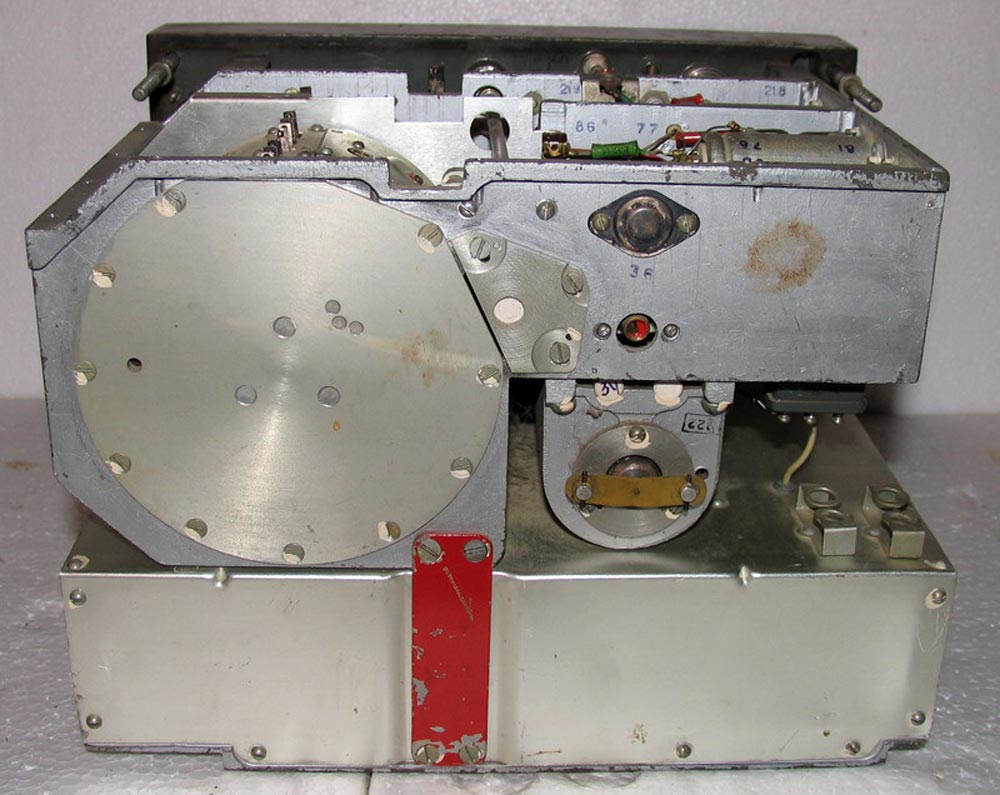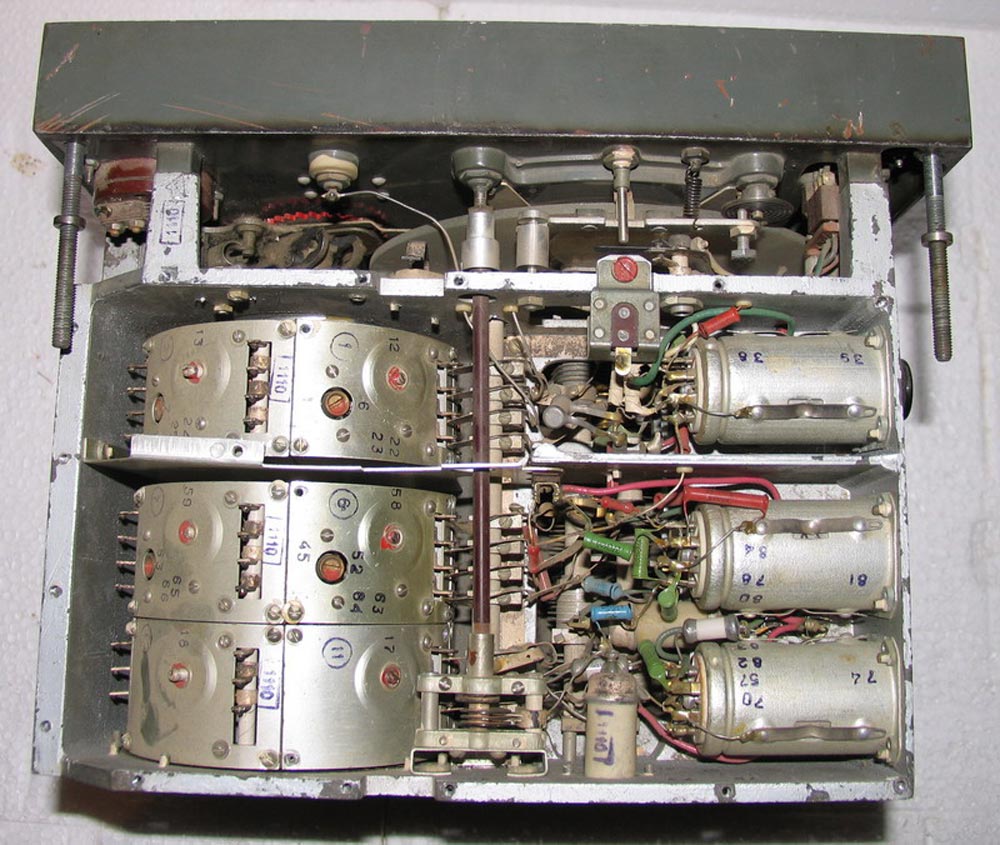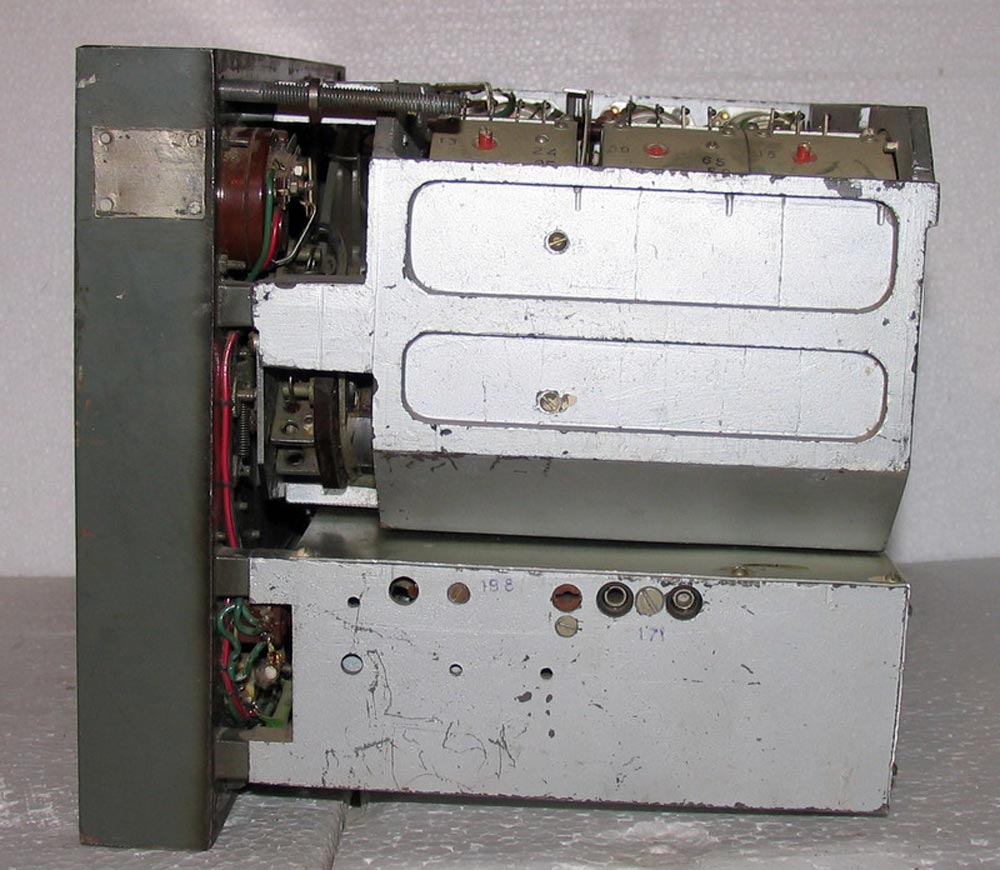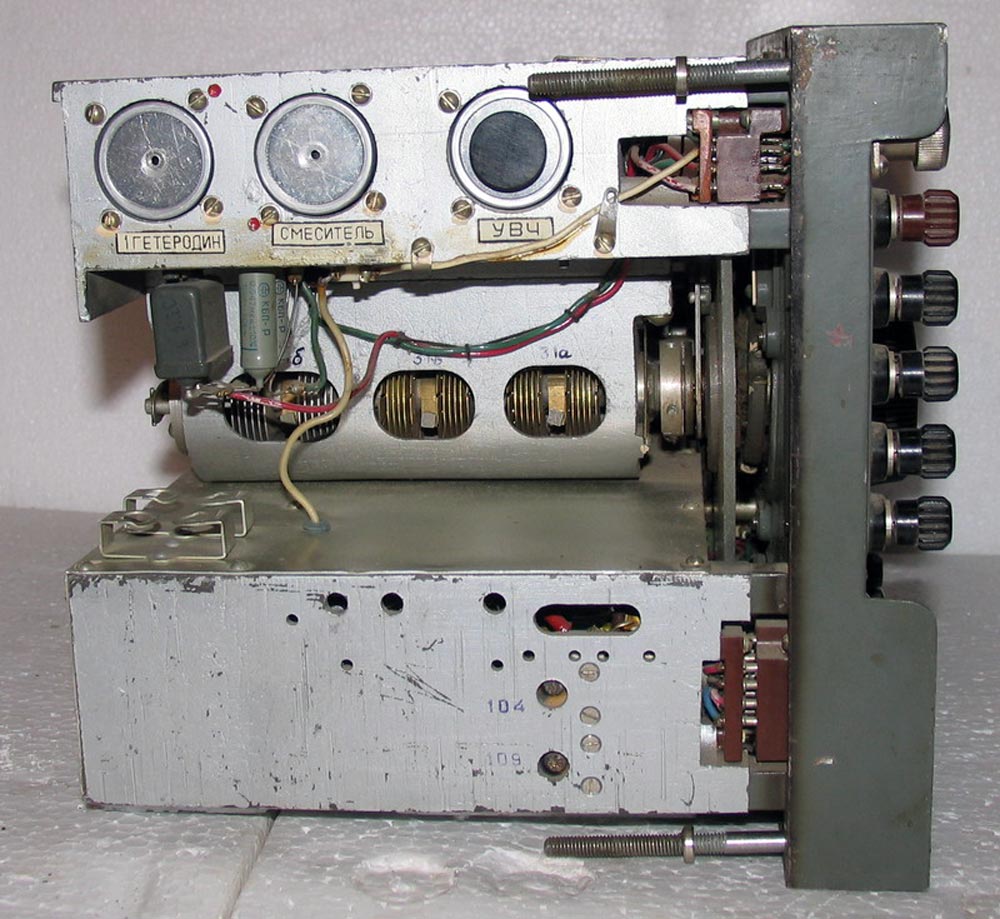Radio receiver `` R-312 '' (Beta).
Receiving and transmitting radio equipment.The radio "R-312" (Beta) has been produced since 1954. The R-312 radio receiver is intended for the organization of radio communication and radio monitoring in the Soviet Army. The radio receiver is assembled on ten 2Zh27L type radio tubes and operates in five sub-bands with smooth frequency overlap from 15 to 60 MHz, with sufficient reserves at the edges of the sub-bands. The receiver can receive radio stations working with AM, FM and tone modulation, as well as telegraph and suppressed carrier signals. When receiving AM-FM stations, the sensitivity is 5 ... 8 μV, and when receiving telegraph and SSB - 2 ... 3 μV. The radio has a two-stage IF bandwidth control that switches automatically when modulation is selected. When receiving AM signals, the IF bandwidth can be changed from 9 khz with a narrow band, up to 25 khz with a wide one, when receiving FM signals from 60 and up to 180 khz, respectively, when receiving telegraph signals and SSB from 3 to 9 khz. With a strong signal, signal spikes outside the 3 khz band are quite noticeable. The receiver has a mode of receiving CW signals by the method of beating between audio frequencies, the so-called tone modulation. Selectivity on the adjacent channel is 74 dB, and this is the maximum value when receiving CW - SSB, on the mirror image from 36 to 60 dB. The IF is 3 MHz. The receiver is powered by 2.5 V accumulators, which directly feed the incandescence of the lamps, and the anodes of the lamps are powered through a vibration transducer with an output voltage of 80 volts. Consumption current through the anode is not more than 25 mA, by heating it is 0.7 A. The power of the low frequency amplifier is 50 mW. Dimensions 445x290x255 mm, weight 20 kg.